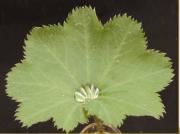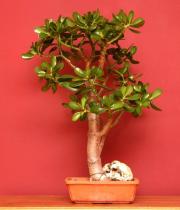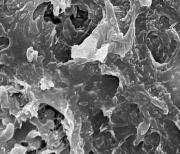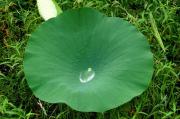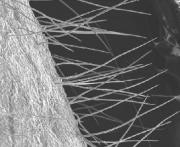Introducing superhydrophobicity in plants
A very large number of plants are superhydrophobic. The distribution and growth patterns are varied, so it is difficult to say why some plants are superhydrophobic and others are not, but there are advantages and disadvantages of this strategy of natural adaptation. The roughness required for superhydrophobicity costs energy to produce and scatters light, but this can be worth developing because leaves with a superhydrophobic surface remain free of dirt and water (for more details see the publication by W. Barthlott and C. Neinhuis below). Futhermore, there may be other benefits as yet unknown or suspected, but not yet confirmed. These other benefits include maintaining contact with the atmosphere to respire (lichen), floating on water without internal buoyancy (e.g. Lotus, fungus), protection from snails (e.g. aquilegia), collection of rainwater (e.g. euphorbia, Lady's Mantle).
Just as with artificial surfaces, plants need roughness and a reasonable contact angle to generate superhydrophobicity. The penalty for the plant, in addition to the cost of building the structures, is that the rough surface of the leaf is slightly grey, thus reflecting more light than a flat surface. The reason for this is that the structures on the leaves are not only on the nanometer scale, but also on the micrometer scale. This improves the water repellency, but scatters light.
The roughness on plant leaves appears to be of two main types. Firstly waxes can crystallise to form roughness at different scales. This was exploited in one of the first papers on superhydrophobicity (the publication by Onda et al. below), but the shapes these can form are many and varied. Some plants use different mixtures of waxes forming different roughness shapes, but achieve broadly the same effect, suggesting that the effect has evolved separately in different plant groups. The growth of the structures on plants follows a similar pattern to that of the sol-gel foams described in the surfaces section, although the waxes also use crystallisation to achieve more complex and varied set of structures. Secondly the plant hairs (known as trichomes) can form the roughness. Plants using this form a different group, and this contains Lady's Mantle, Euphorbia and Clover.
The variety of shapes that plants use suggests that there is not a strong advantage to any particular pattern, although some plant surfaces are clearly better than others. This indicates that the advantage of really good superhydrophobicity over moderate superhydrophobicity is not always that great, depending on the reason that the specific plant in question has developed superhydrophobic adaptations to its natural environment.
Read more in this Scientific American article and here on Wikipedia.
Publications
![]()
Super-water-repellent fractal surfaces,
Langmuir 12 (1996) 2125-2127.
![]()
The purity of sacred lotus or escape from contamination in biological surfaces,
Planta 202 (1997) 1-8.

